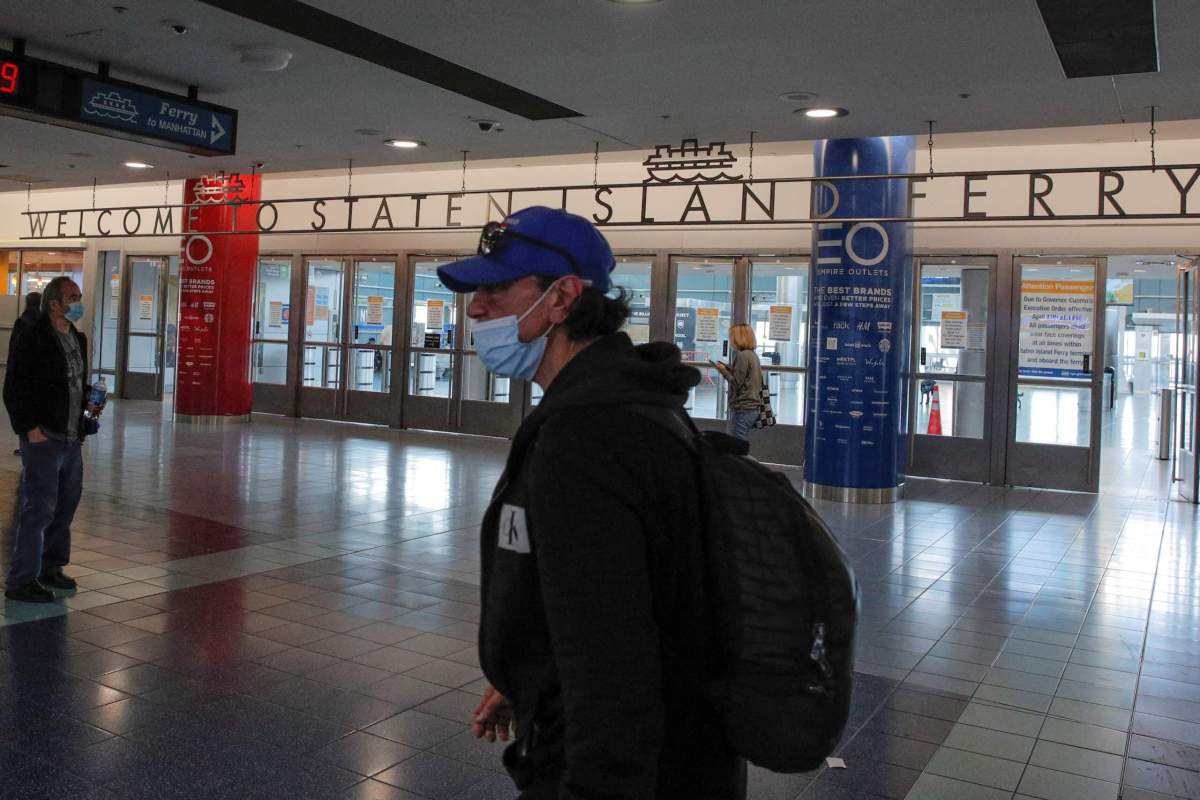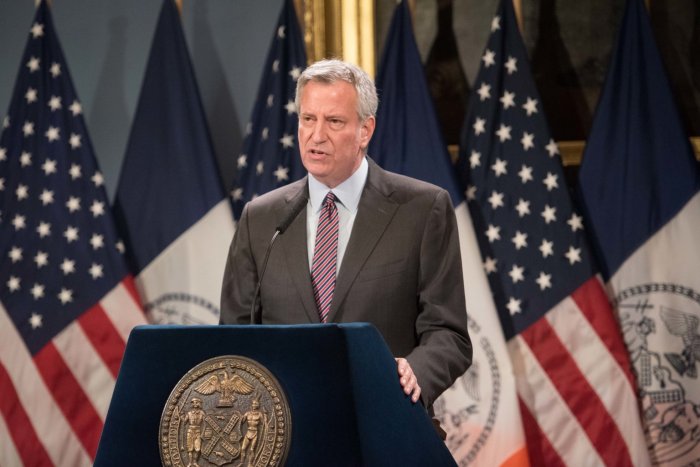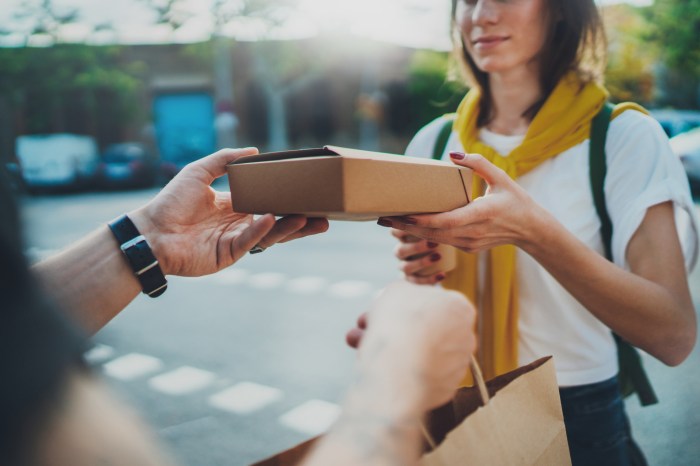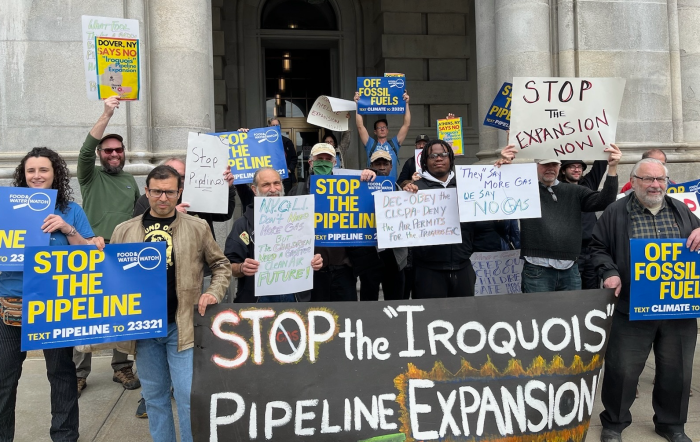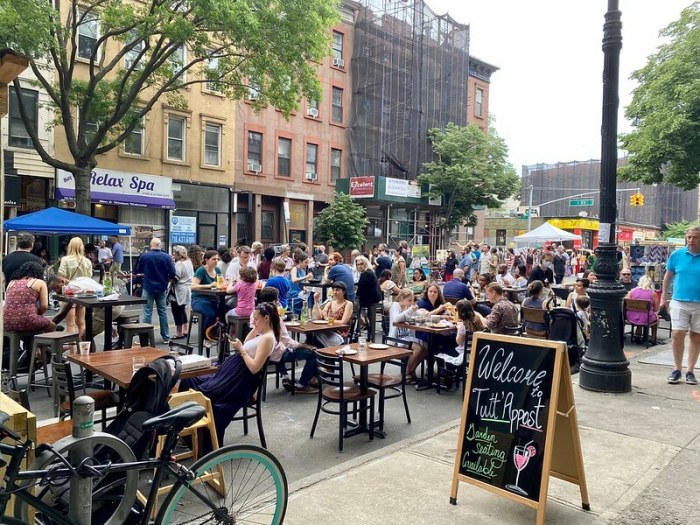It is far from the horrific surge of March and April that brought New York City to a virtual standstill, but the current, steady increase of COVID-19 across the five boroughs threatens to cause further disruptions to life if the second wave is left unchecked.
The city’s Health Department reports that 11 ZIP codes in New York City have had a 7-day positivity average exceeding 4% between Nov. 2-8 — a sure sign of the slow yet steady spread of the deadly virus, with hundreds of new cases being reported every day.
The uptick in COVID-19 has already led to a new round of governmental restrictions. On Wednesday, Governor Andrew Cuomo announced that bars, restaurants and gyms would need to close no later than 10 p.m. each night to reduce the number of patrons; he also mandated, with two weeks before Thanksgiving, that households hold gatherings of no more than 10 people.
As clusters of COVID-19 cases developed in October, the city and state instituted action plans to expand testing and implement business and school closures to tamp down the cases. That worked to reduce the rates in the designated hot spots, and Cuomo said that the state would continue to take aggressive actions in micro-clusters as they pop up in the fall and winter.
Staten Island has become the city’s newest hot zone. Just three of the 12 ZIP codes on Staten Island registered a 7-day positivity rate average of less than 3%, according to the city’s Health Department: Graniteville (10303, 1.92%), Port Richmond (10310, 2.63%) and St. George (10301, 2.8%).
COVID-19 is exploding across the borough, primarily in two key areas near the southern tip of the island: Great Kills (10308), which registered a 5.44% 7-day positive average and 49 new cases; and Tottenville (10307), which has a 5.3% 7-day positive average and 27 new cases.
While Staten Island is burning up with COVID-19, Cuomo designated a yellow zone cluster that encompasses almost the entire borough. The borough’s overall positivity rate is 2.9%, and it has seen a dramatic increase in hospitalizations related to the virus.
Under the yellow zone, mass gatherings are limited to 25 or fewer people, houses of worship must reduce their capacity to no greater than 50%, and there’s a four-person seating limit for all indoor and outdoor dining. Schools in the yellow zone are also subject to random COVID-19 testing.
Despite the dire situation on Staten Island, the third- and fourth-highest 7-day positivity averages in New York City are found in Queens. Richmond Hill (11418) registered an average rate of 5.09%, with 47 new cases detected, while Ditmars/Steinway (11105) had a 7-day positivity average of 4.84%, with 55 infections.
As of Thursday morning, Nov. 12, no cluster action zones were created in either community.
Seven other New York City areas had a 7-day positivity rate of above 4%, according to the city’s Health Department, as shown on the chart.
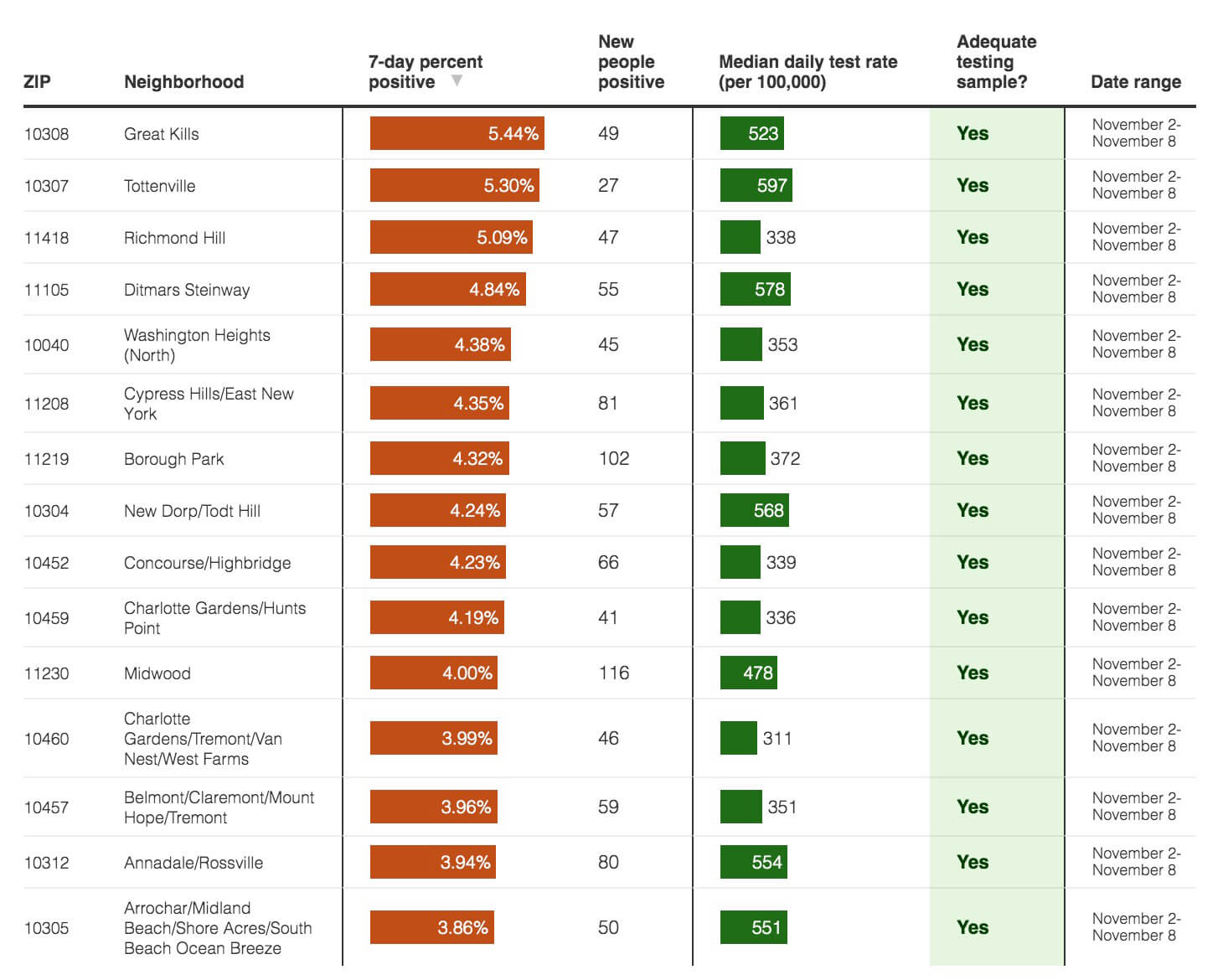
The uptick in COVID-19 has brought the citywide 7-day positivity rate up to 2.42%, according to the city’s Health Department. Approximately 363 people were hospitalized with, and 58 people have died from, the virus over the previous 7 days through Nov. 11. Infections, hospitalizations and deaths are all trending upward, the city reported.
The increase has caused some concern that New York City public schools, per Mayor Bill de Blasio’s previous remarks, might soon be ordered to close buildings and revert to remote learning only if the positivity rate exceeds 3%.
The mayor doubled down on that promise Thursday.
Mayor Bill de Blasio says City Hall is preparing to close down schools if city COVID-19 positivity rate reaches 3%. Today the positivity rate based on a seven-day rolling average is 2.6% (Deleted earlier tweet with wrong rate).
— Alejandra O’Connell-Domenech (@AODNewz) November 12, 2020



